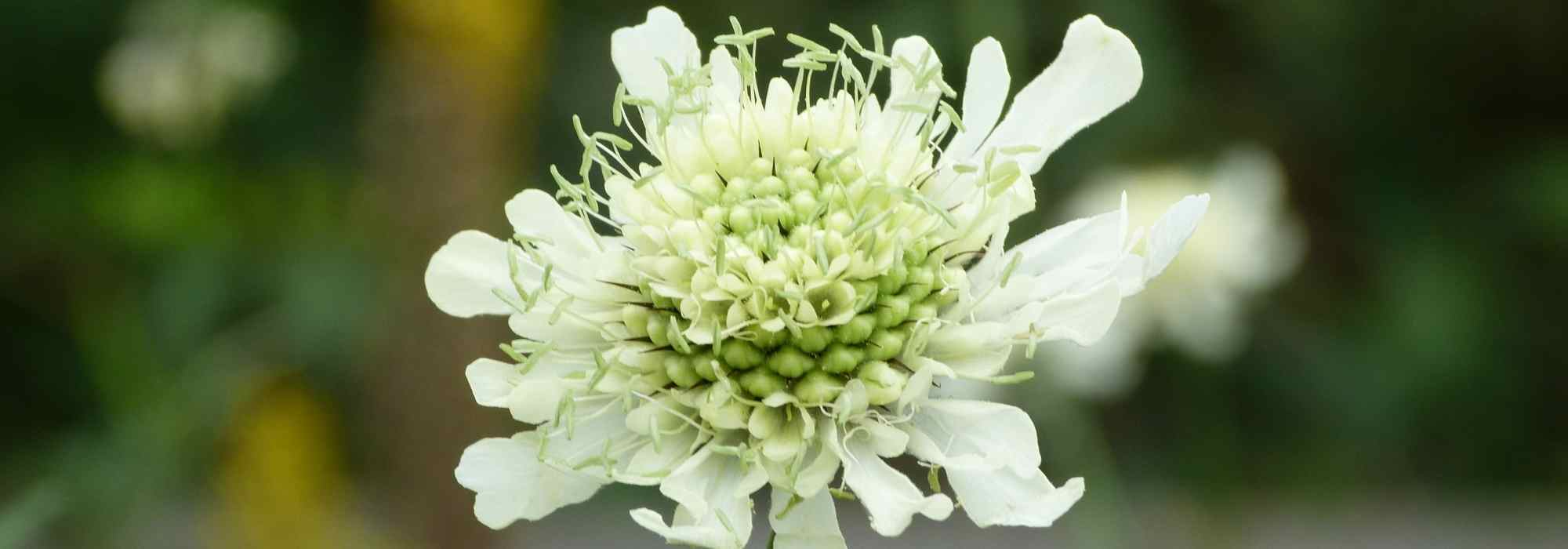
Cephalaria: planting, growing
Contents
Cephalaria in a nutshell
- Spectacular, the Cephalaria is a XXL perennial with the appearance of a giant scabious!
- With extraordinary dimensions, some species like Cephalaria gigantea exceed 3 m in height.
- Extremely hardy, it possesses the robustness of wild plants.
- It is easy to grow in rather rich, cool, and very well-drained soil.
- It is an essential perennial in wild gardens and natural scenes.
A word from our expert
Cephalaria is an extraordinary herbaceous perennial! Like Cephalaria gigantea, the giant scabious, it boasts spectacular dimensions, forming airy clumps that easily reach 2 m in height when in flower. In the same genus, Cephalaria alpina is another equally impressive form.
Resembling elegant pom-poms, their cream or pale yellow giant scabious flowers sway atop long stems from June to September, offering a flowering display that is both abundant and airy.
Well-established in any good garden soil, fresh but well-drained, Cephalaria forms beautiful, generous, and vigorous clumps in just a few years without even requiring staking.
Graceful yet robust, it has a hardiness of at least -30°C.
Cephalaria is designed to bring lightness, volume, and a great deal of grace to the middle or back of perennial borders and integrates wonderfully into naturalistic and/or wild gardens.
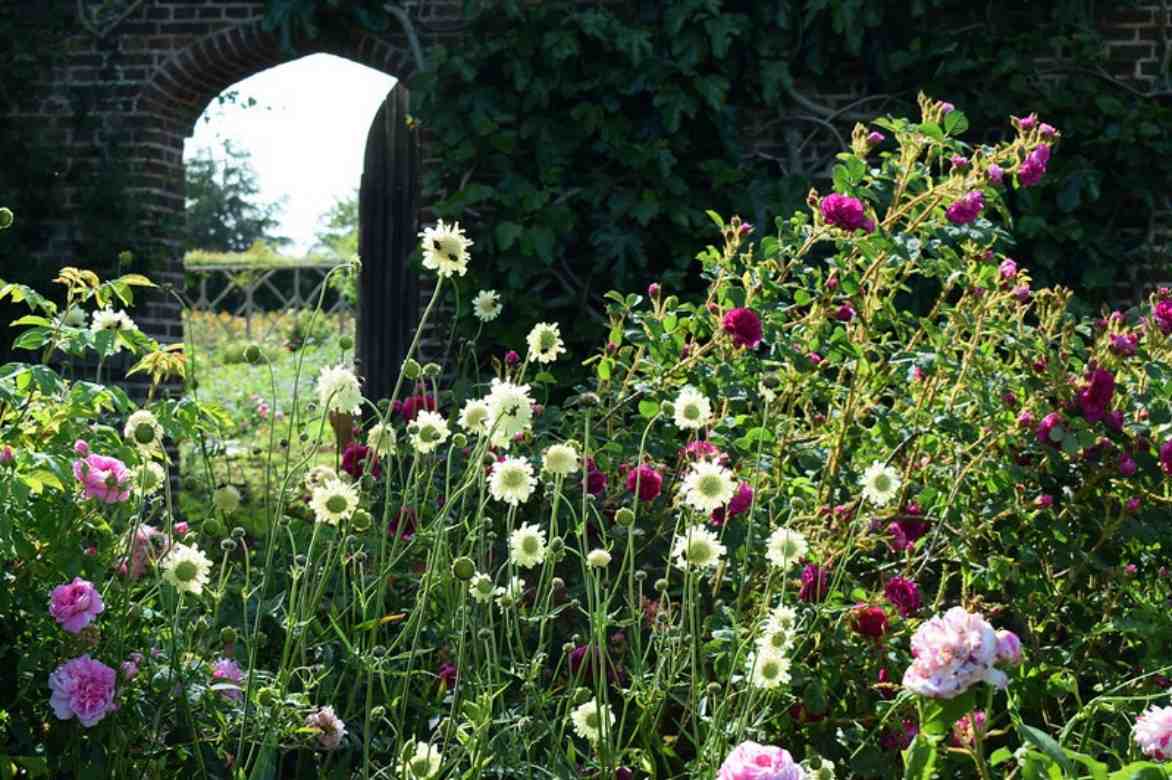
Cephalaria gigantea alongside roses in the gardens of Sissinghurst, England (© Mark)
Description and Botany
Botanical data
- Latin name Cephalaria
- Family Caprifoliaceae
- Common name Cephalaria, Giant Scabious, Yellow Alpine Scabious
- Flowering June to September
- Height 1.20 m to 3 m
- Sun exposure Sun, partial shade
- Soil type rich, cool, well-drained
- Hardiness -30°C
Cephalaria is a perennial plant from the family Dipsacaceae, just like its relatives the scabious and Knautia. It was previously classified in the family Caprifoliaceae, formerly Dipsacaceae. This genus comprises about 65 species of herbaceous perennials or annuals native to temperate regions of the Northern Hemisphere, particularly the Caucasus region. As it is found in the pastures and rocky areas of high mountains, it exhibits excellent hardiness, around -30°C, sometimes even more.
Among the most common Cephalaria in our gardens, we find Cephalaria alpina, also known as “Yellow Alpine Scabious” and “Alpine Cephalaria”, native to our Jura mountains, and Cephalaria gigantea or “Giant Scabious”.
Cephalaria is a vigorous herbaceous perennial. A bit slow to establish, it requires about two years to flourish. It should be given plenty of space to express its full potential. The plant forms an impressive, upright, bushy clump reaching heights of 1.20 m to easily over 2 m when in flower, with a spread of 50 cm to 1 m. As its name suggests, Cephalaria gigantea is the giant of the genus, sometimes reaching heights of up to 3.50 m. These perennials add volume and verticality to borders and can be used alongside other robust perennials to structure somewhat flat compositions.
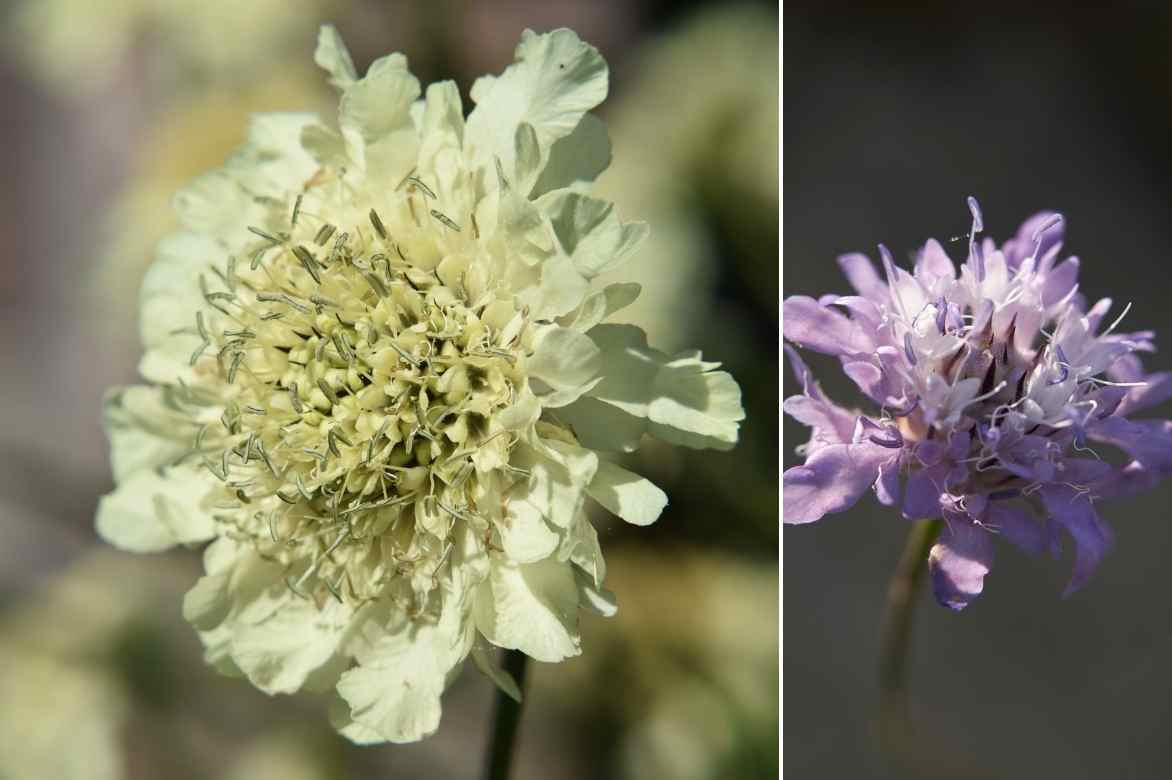
Cephalaria gigantea and Cephalaria transsylvanica
From its robust stump emerge large green, opposite leaves in spring, divided into long, hairy, coarsely dentate leaflets, arranged in a rosette. These basal leaves are lyre-shaped or pinnatisect and measure 30 to 40 cm long. From this lush, deciduous foliage, rise tall, slender, hollow yet sturdy stems, which are slightly branched and sparsely leaved, featuring grooves and covered in retrorse hairs. This foliage is primarily basal. As one moves up the stem, the leaves become fewer until reaching the heads. It disappears in winter and only reappears in spring.
Cephalaria offers a graceful and generous flowering that lasts throughout the beautiful season. In summer, from June to August, even September, these tall, airy stems bear solitary inflorescences at their tips resembling those of scabious. The flowers, in heads measuring 3 to 6 cm in diameter, bloom in pale yellow or cream shades. They take on a globular, dome-shaped form and are surrounded by bracts that form a tough involucre. They resemble small, light pom-poms dotted with prominent stamens. Each corolla is formed of long, dentate peripheral florets surrounding a shorter heart made up of densely clustered small flowers, as seen in the giant scabious. The Alpine Scabious reveals flowers with equal florets.
This melliferous flowering attracts numerous pollinating insects, including bees, butterflies, and other foragers.
The flowers have good vase life and are well-suited for creating rustic bouquets throughout the summer.
After flowering, the flowers transform into fruits, spherical achenes dotted with black pins, particularly graphic, and their seeds are highly appreciated by birds.
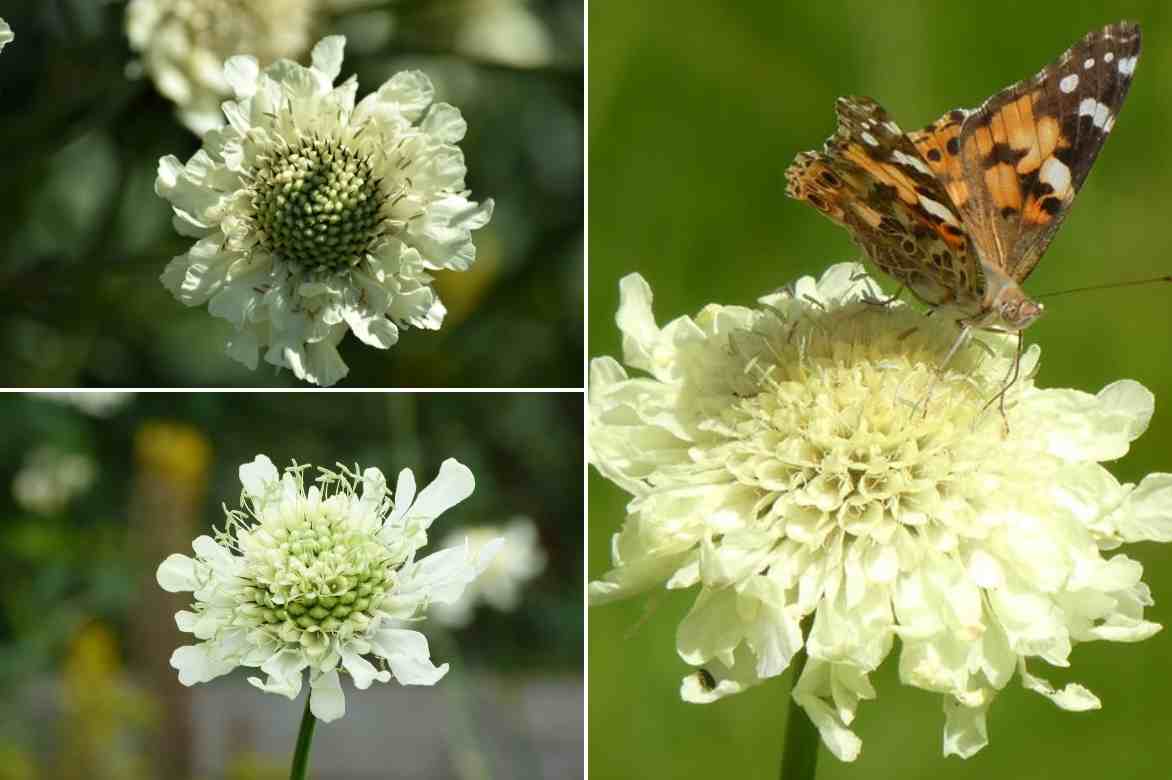
Main species
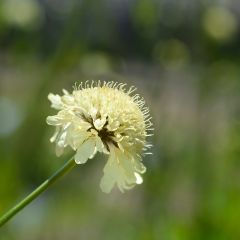
Cephalaria gigantea
- Flowering time July to September
- Height at maturity 2 m
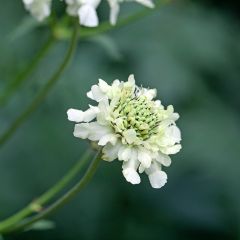
Cephalaria alpina
- Flowering time July, August
- Height at maturity 1,20 m
Discover other Cephalaria
View all →Available in 1 sizes
Available in 1 sizes
Planting
Where to plant it?
Cephalaria has the accommodating nature and hardiness of wild plants that grow on their own without maintenance. Very hardy, sometimes down to -30°C, it thrives throughout France and can be cultivated in all regions.
Provide it with a sunny spot near the Loire or a semi-shaded area in our southern regions. Preferably, place it sheltered from the winds, although it is a well-structured plant in windy situations that rarely requires staking.
It grows well in any good garden soil, even clayey, as long as it is sufficiently drained. It dislikes both overly dry soils and those that retain water. It prefers soil that remains cool in summer, but not heavy or waterlogged. It will also thrive better in soil rich in organic matter.
Over the years, this impressive perennial, once well established, forms beautiful airy and highly floriferous clumps. An adult plant grown under good conditions can occupy 1 m² after a few years.
Its vigorous growth allows for the creation of a light and colourful countryside decor. It is a robust and low-maintenance plant, suitable for a wild and natural-looking area of the garden. It adds a rustic touch to naturalist gardens, at the heart of large perennial beds or along the banks of water bodies.
When to plant it?
Planting Cephalaria is done in spring, around April, or in autumn, in September-October. Avoid planting during periods of severe frost or extreme heat.
How to plant it?
Space the plants, depending on the species, 50 to 60 cm apart for Alpine scabious. Plant 1 plant per m² for Cephalaria gigantea.
- Prepare the soil well by loosening it
- Dig a hole three times wider than the root ball
- Add some river sand or gravel to improve drainage, especially in heavy soils
- Plant without burying the collar of the plant and fill in with garden soil mixed with a good handful of compost or manure
- Firm down with your hand or foot
- Water generously and then mulch
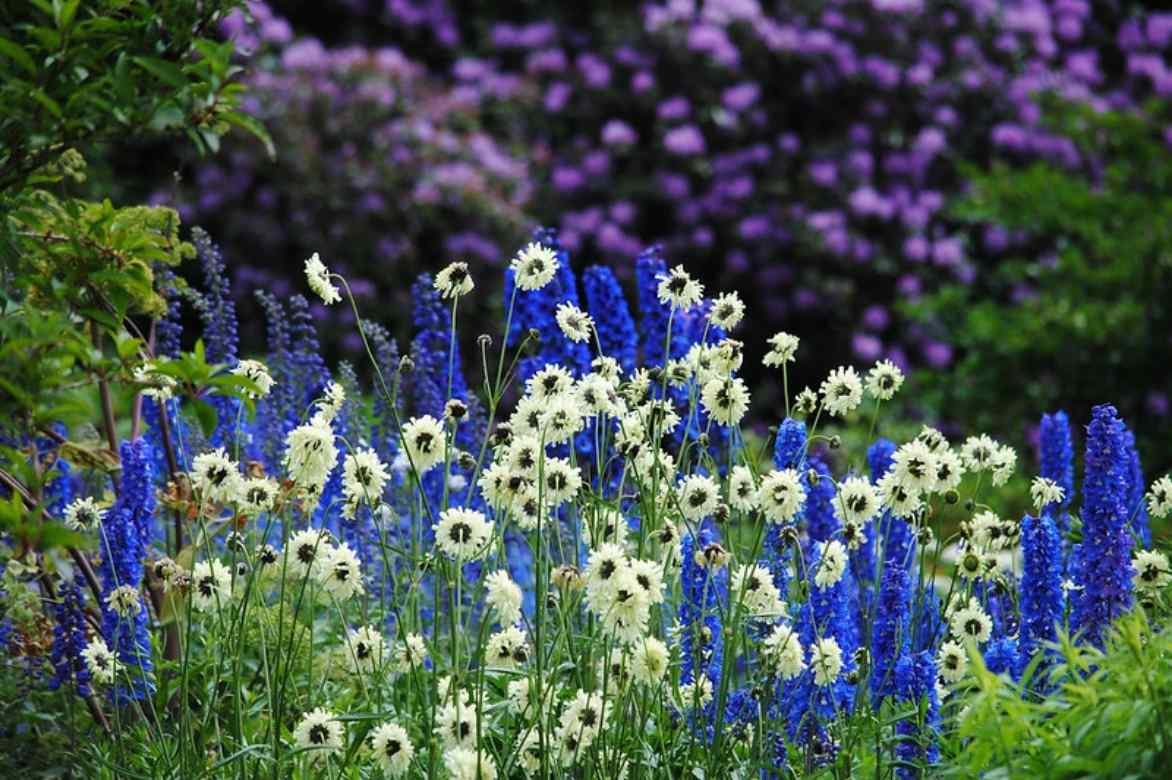
A beautiful association of Cephalarias and Delphiniums (© Mark)
Read also
12 giant and imposing perennial plantsCare and Maintenance of Cephalaria
Once well established, Cephalaria is very low-maintenance, requiring little care as long as the soil remains sufficiently moist in summer. Provide regular watering but avoid overwatering. Mulch the stump in spring to ensure the base remains cool enough in summer.
Remove faded flowers as they occur to prolong flowering: take the opportunity to create cut flower arrangements! In autumn, or at the end of winter, cut back the clumps to ground level.
Every 3 to 4 years, divide the clumps to rejuvenate them and ensure the plant’s longevity.
Cephalaria is rarely affected by diseases or pests.
Multiplication
Cephalaria seeds self-sow naturally in the garden if you leave a few faded flowers in place. Clump division in spring or autumn is easy and allows for quick production of new young plants. Proceed with well-established clumps.
- Using a spade, lift the clump and separate a few leaf rosettes
- Immediately replant these divisions in the garden in well-tilled, well-draining soil
- Water generously and regularly to aid recovery
Associate
Spectacular and rustic, Cephalaria is essential in a naturalist garden, where it adds a wild touch, a refined note, and a structural presence to unpretentious flowerbeds. Its tall stature, with a transparent and airy appearance, does not overshadow other perennials.
These immense specimens of perennials are planted at the back of the flowerbed, paired with other vigorously growing perennials, giant plants such as Verbena bonariensis, large autumn asters, vernonia crinita ‘alba’, Veronicastrum, Verbascum olympicum, Gaura lindheimeri, Campanula lactiflora, or Ferula communis.
In a more contemporary garden, it will provide a delicate touch, scattered among grasses.
It pairs well in a large romantic flowerbed with roses, Cynara cardunculus, or gypsophila.
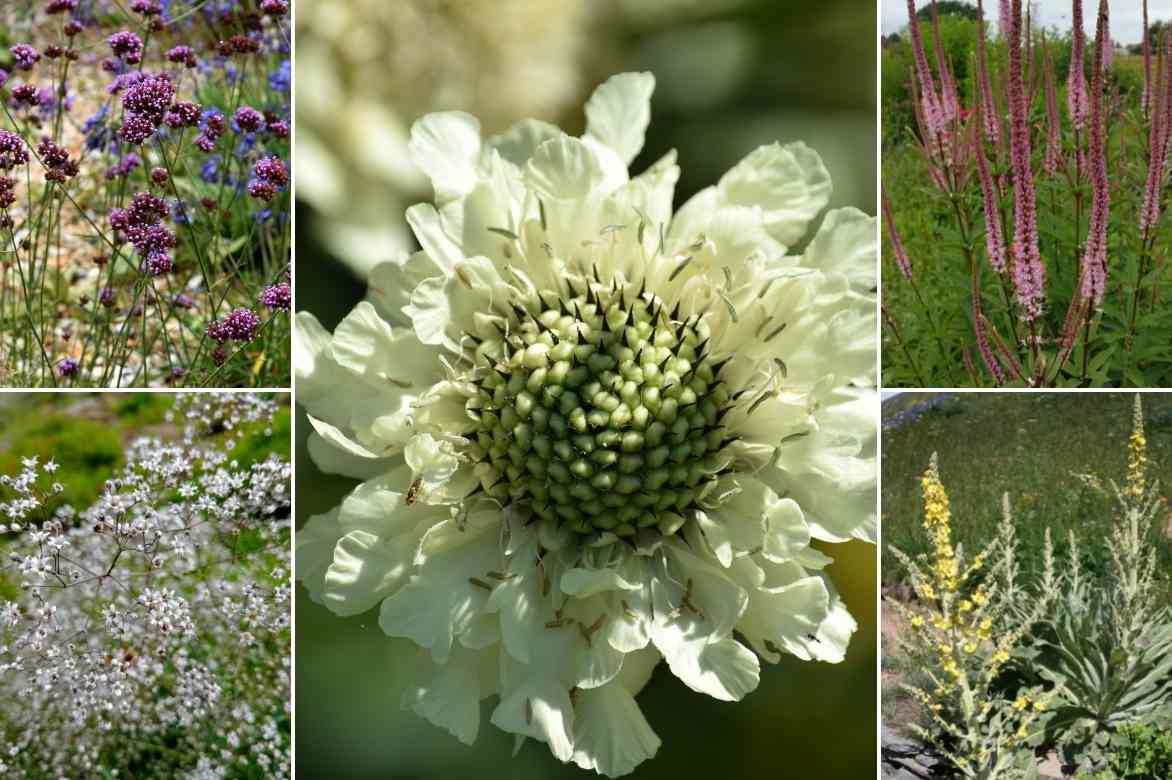
An association of Cephalarias, Verbena bonariensis, gypsophila, Veronicastrum, and Verbascum ‘Olympicum’
Useful resources
- Cephalaria is ideal for natural and naturalistic gardens!
- Subscribe!
- Contents

































Comments